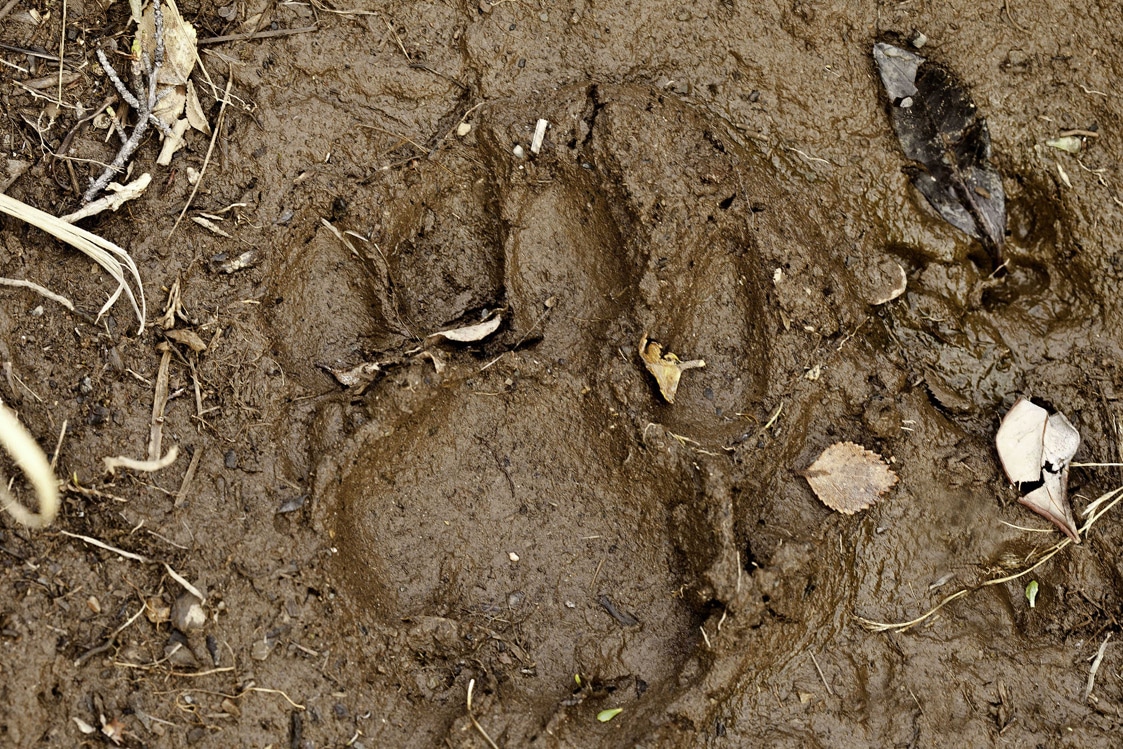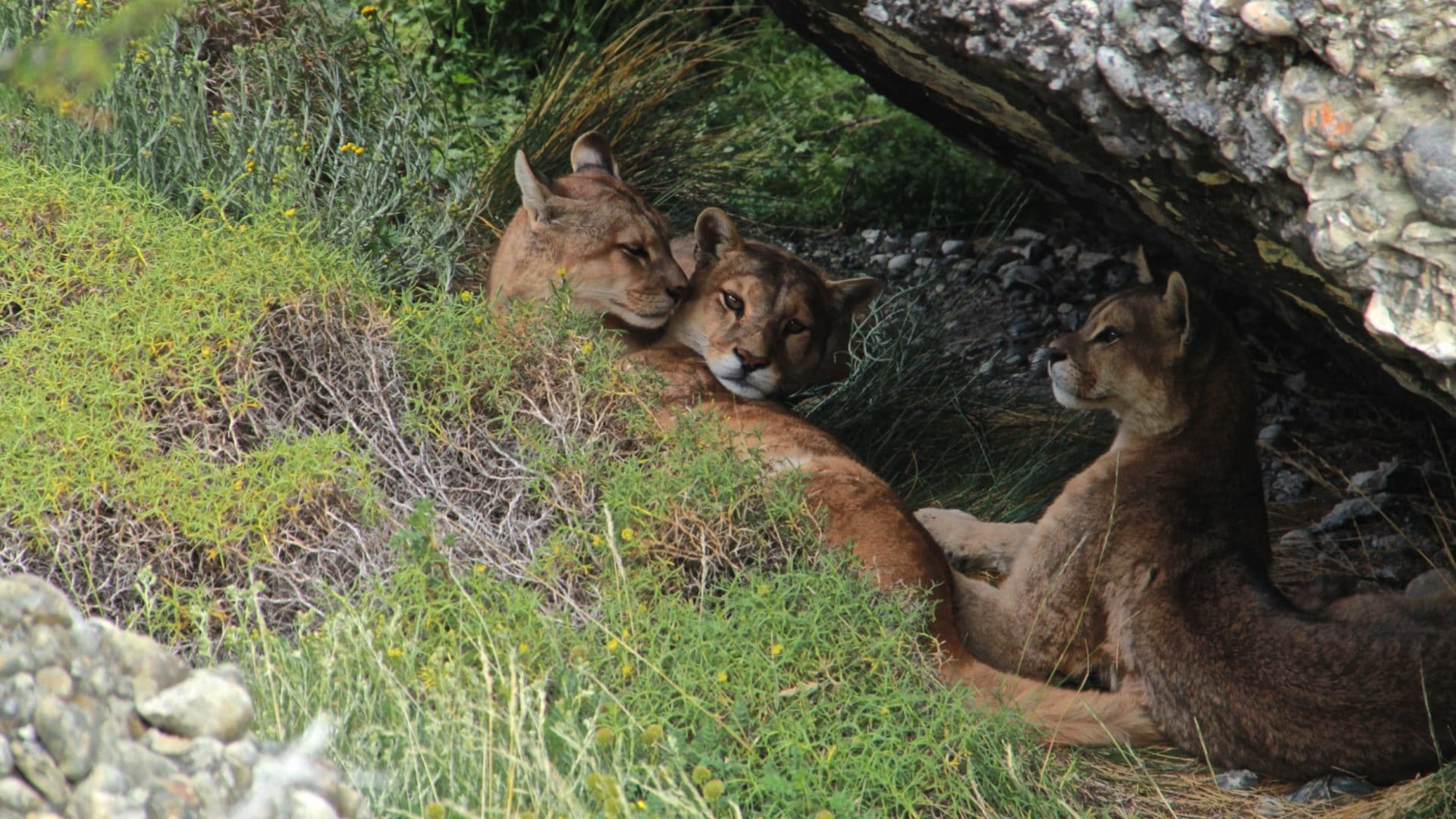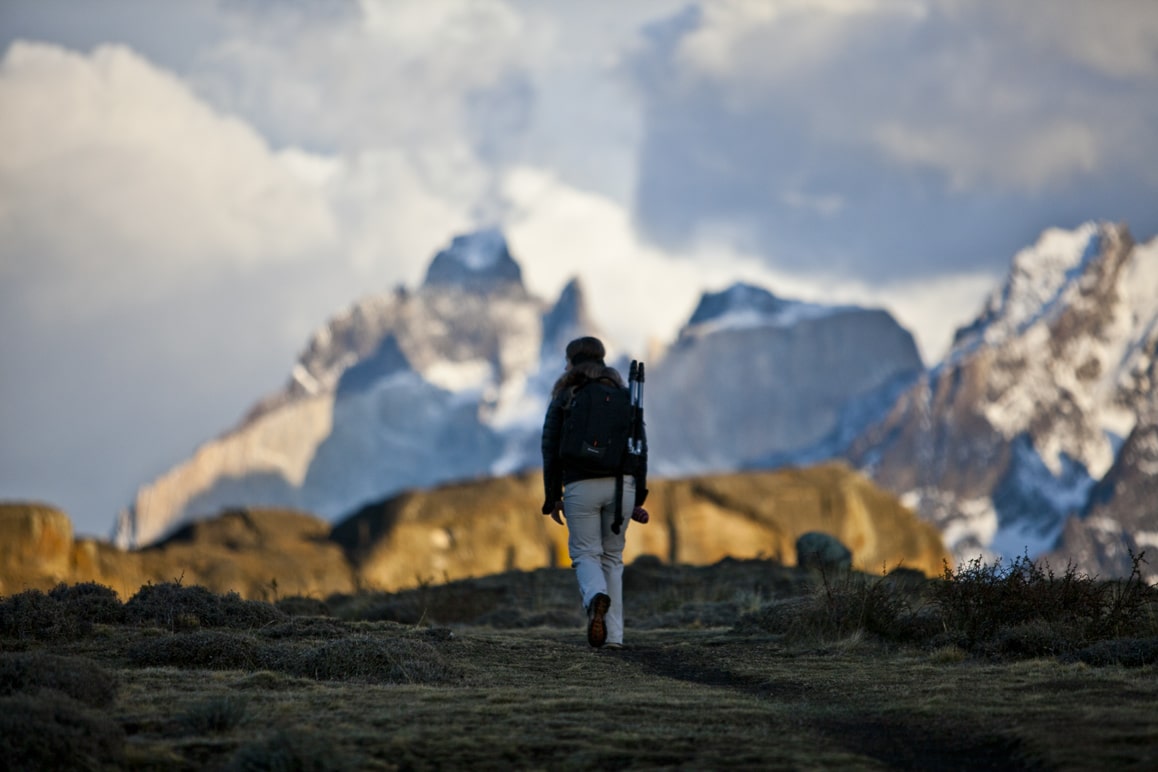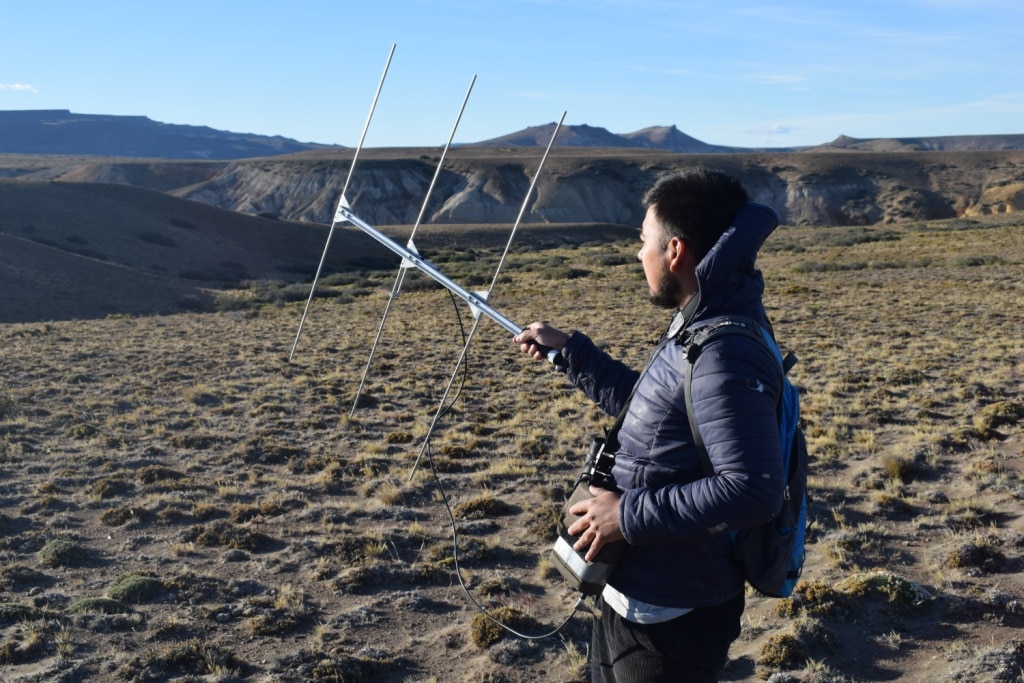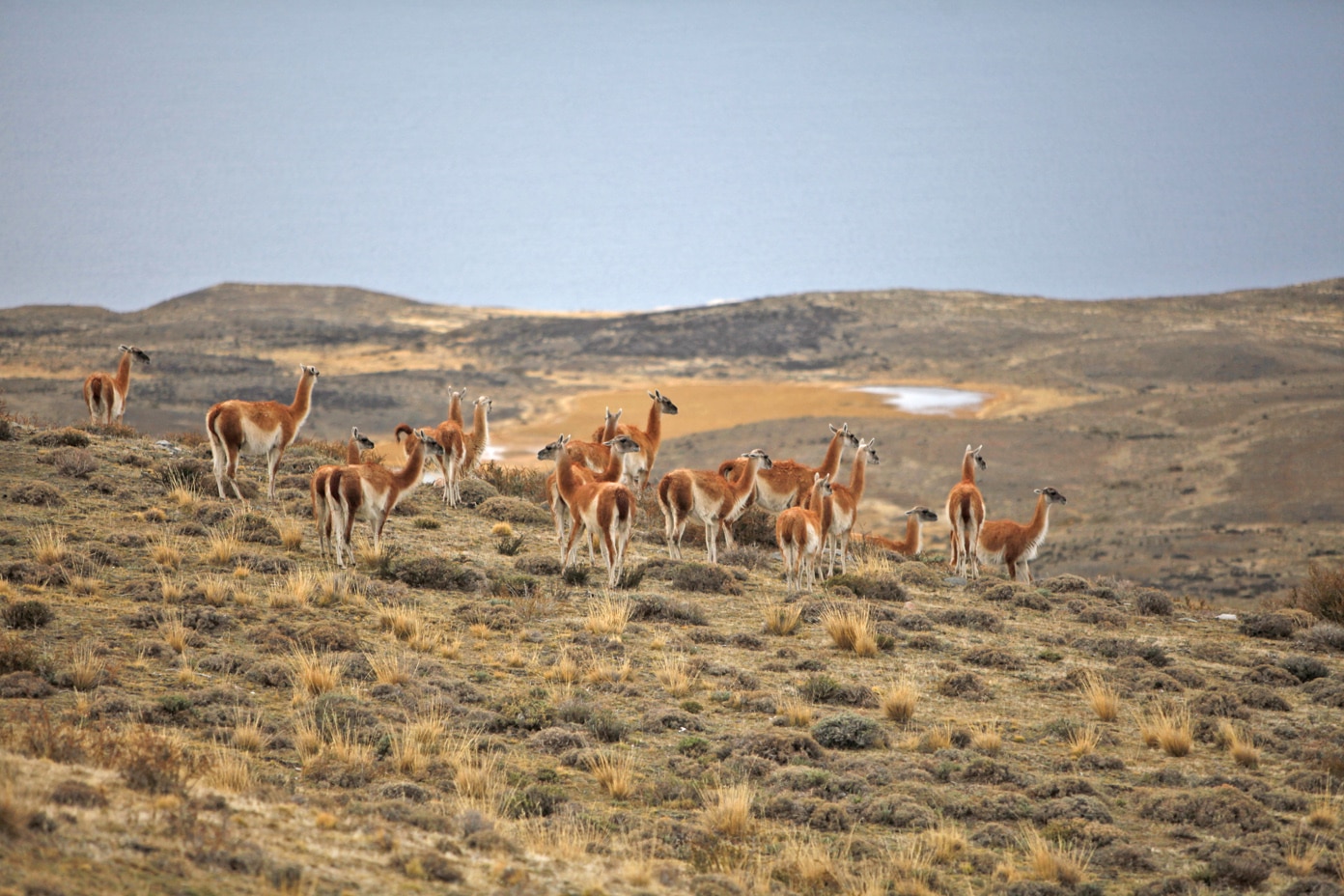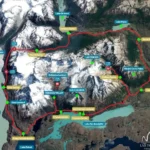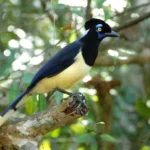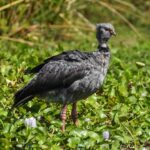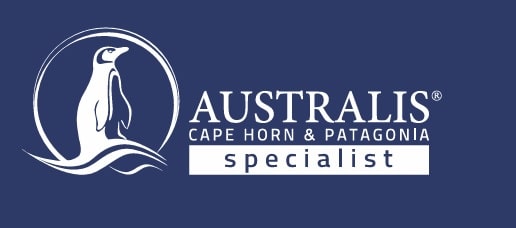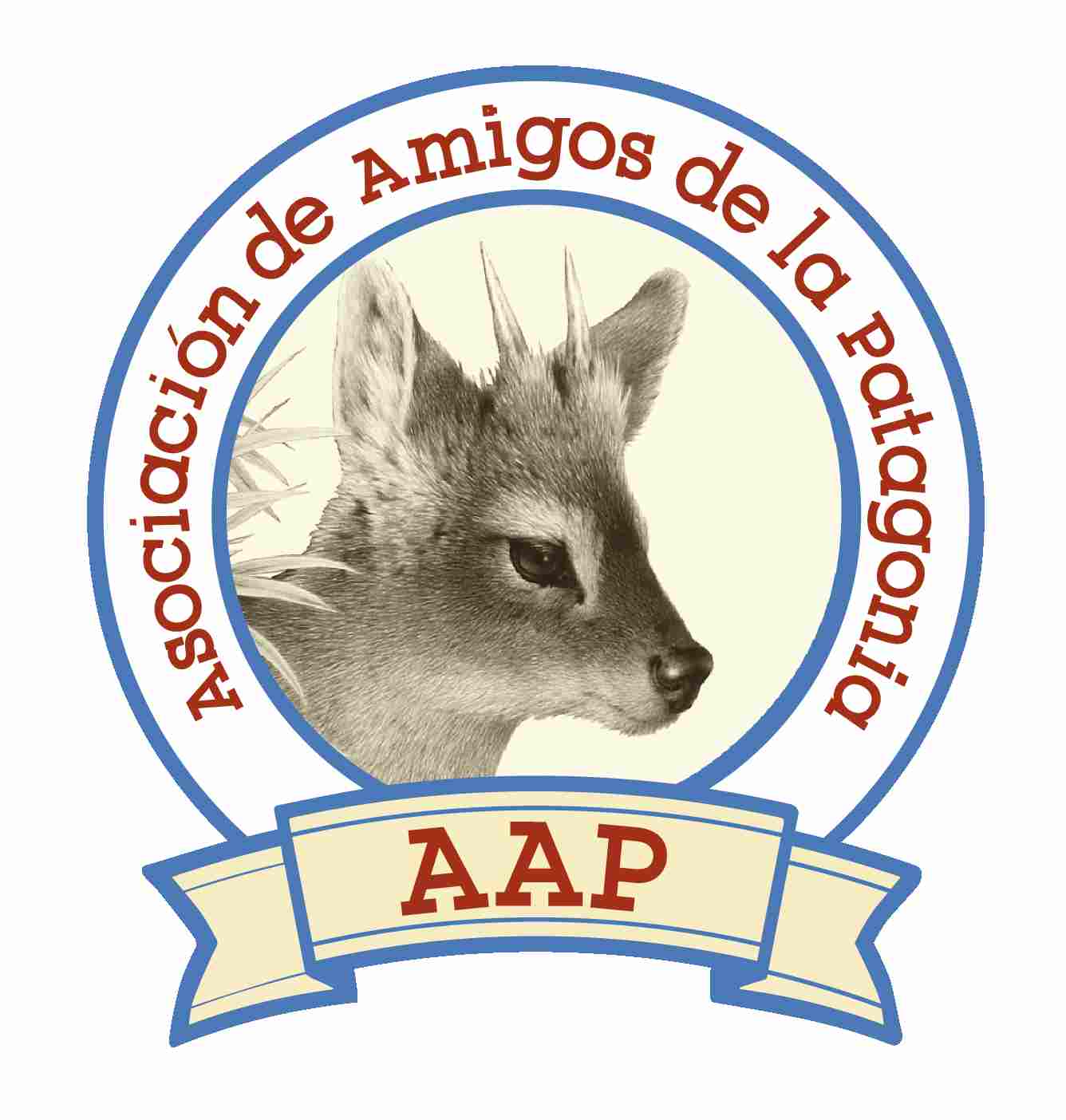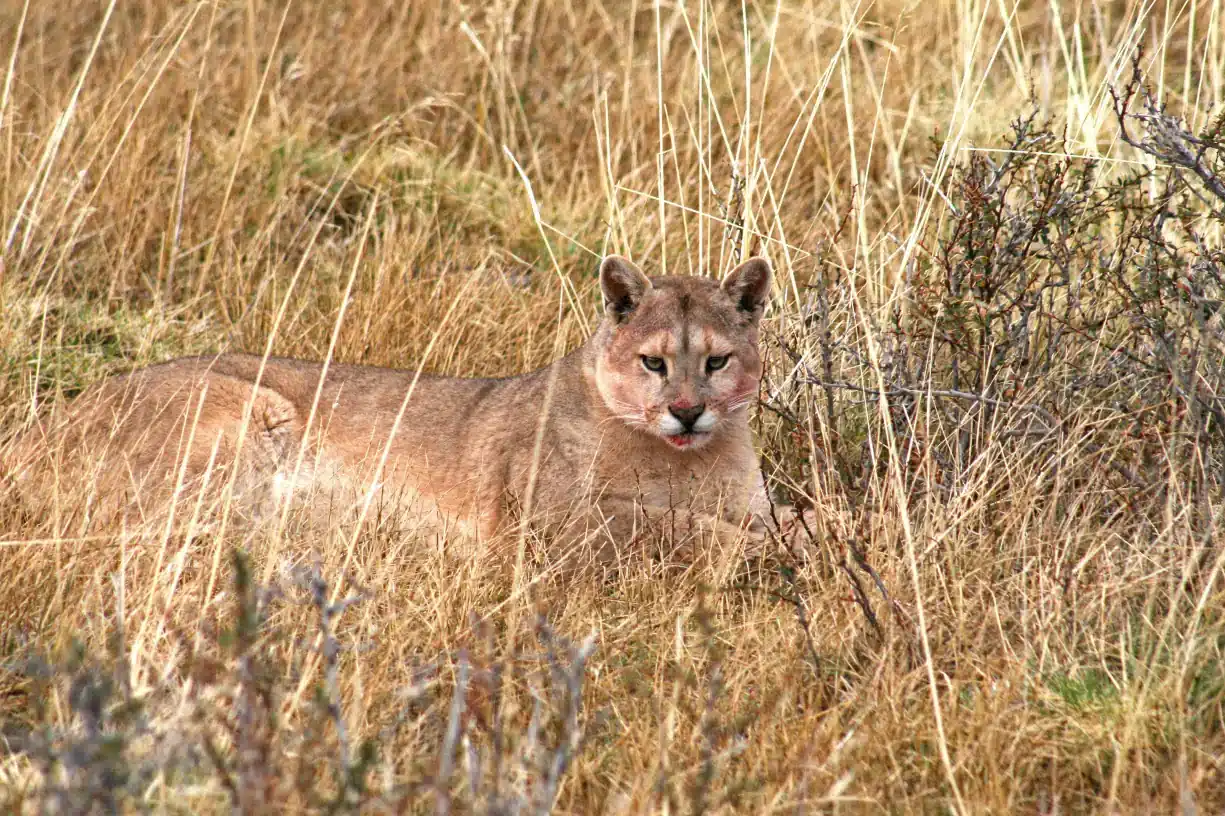
Pumas in Argentina and Chile – The big cat of the Americas
One of the most impressive, yet elusive and hard to spot animals in Patagonia is the Puma Concolor. America’s mountain lion is a third cousin of the Big Cats from Asia and Africa. Even though it has always been difficult to see the King of Patagonia in its natural habitat, every time the sights are more frequent since they have been declared protected species both, in Argentina and Chile. Being able to see this amazing animal has nothing to envy the African Safaris.
Interesting facts about the Pumas in Patagonia
It’s the largest carnivore, with a weight that varies from 50 kg (females) to 80kg (males). Its length is from 2,2 to 2,8 meters from head to tail, and they have an incredible ability to hunt. Their lifespan is about 10 years.
Their agility and camouflage skills (with an ideal gray-brownish fur), together with their highly developed sense of smell, sight, and hearing, make them very effective at the time of catching different kinds of prey. Their favorite meal is probably the Guanaco, but they also eat rheas, rodents, birds, and other species.
They breed from 1 to 6 cubs, which are with their mother until they turn 2 years. Out of the breeding and reproducing cycles, it’s rare to see pumas together, since they’re quite solitary and territorial. Something very curious about these animals is that they don’t roar, but they purr, like a house cat!
Livestock and other problems
It’s very rare that a Puma attacks a human, since evolution has shown them that it’s better to keep away from us. However, humans have been tracking and killing pumas for ages, mainly for two reasons: problems with the livestock and for sport.
Farmers in Patagonia have usually their livestock distributed across very extensive territories, which means that they can’t control all the potential threats that might exist. Among those animals, sheep represent the biggest problem, since one Puma can kill 30 or 40 individuals in one single night when teaching its puppies to hunt.
This has always triggered the quick and fastest answer: kill the Puma. In the beginning, nobody cared about it –even the government used to pay the farmers for each dead Puma. Then, when scientists and naturalists started to show how important they’re on the food chain (and other facts), the conflict of interests started to grow until reaching National relevance.
Studies have shown that if the Pumas have easier preys to find (such as rodents), or there are donkeys or big animals among the livestock to scare them, or the farmers use some specific (and affordable) techniques to keep them away, the problem with the sheep could reach the end. Furthermore, farmers have been taught about the very interesting market that is interested in spotting pumas, which could become an additional source of income for their economy.
The other problem is hunting as a sport. Nowadays, this is seen as something cruel and destructive, which has brought along new regulations to protect the Cats.
There is an NGO in the province of Córdoba (Pumakawa) that is a sanctuary for Pumas and other species, that has a lot of useful information about these topics.
The importance of Pumas in the ecosystem and their relationship with humans
Pumas are the last species in the food chain of Patagonia, so they are the main predators of Guanacos. When a puma kills a Guanaco, the meat lasts lots of days and also benefits scavenger species and worms. But the importance of Pumas goes beyond this. In Torres del Paine, there is a stable quantity of Guanacos, that easily reproduce, and everything in excess is bad. If they grow in number, without control, environmental manage occurs. Guanacos are resilient animals, they adapt to almost every climate and relief. They need a natural control of the population, the Puma.
It is important to learn about the relationship between humans and Pumas in Patagonia. Because of their importance to the ecosystem, we need to take good care of them. In Chile, many of them are killed because Estancias in Patagonia had pushed out Guanacos from their natural habitat and therefore Pumas don´t have where to get their food from. That’s why they started hunting sheep in the Estancias. Another problem is that when Pumas in Patagonia have puppies, they kill a lot of animals just to teach them, and this affects the economy of the Estancias. As a consequence, humans hunt Pumas, which is illegal. Puma Puppies are extremely dependent on their mothers, and when they are illegally killed or run over by cars, the pups are left alone, with almost no chance of survival.
Also, irresponsible tourism has big impacts on nature. An example of irresponsible tourism is making fires. Making a fire in Torres del Paine national park is prohibited. And people do not care. There had been several fires during the lasts 15 years that damaged ecology too. But the most common example of irresponsible tourism is the waste that people produce in the park.
Can we see Pumas without causing a negative impact on them?
It is important to understand that, when traveling this area, you will be on the habitat of different animals and that you might see plenty of them. When seeing a Puma, or any other animal, on its natural area, people must be respectful and don’t get too close and lowly. If someone gets close, they might feel threatened on their own habitat, and it can be dangerous. Pumas in Patagonia can reach common areas, and we should be respectful. They do not see us as food, but there are two important rules that we should never break: “never run and never give your back to the Pumas”.
How and where can we see Pumas in Patagonia?
Torres del Paine National Park has a high density of pumas. But people do not see them, cause you must be really patient and know exactly where and how to find them. The better way to find pumas, and the only correct option, is to hire a Puma Tracker on a private tour and dedicate a few days while enjoying the park. Although it can be hard to see Pumas in Patagonia when hiring a local guide you might get understand and see the local flora and fauna in a better way.
Some mountain guides have become experts Pumas trackers. When trying to locate one, it’s really important to pay attention to all of our senses, but mostly, pay attention to Guanacos.
In Torres del Paine, Guanacos are Puma’s main food. And they know, how dangerous it is for them. They’ve developed a way of communication to alert other Guanacos when a Puma is around. If you suddenly see that Guanacos start making loud noises and held their heads high, it is probably because there is a Puma patrolling the area.
Also, the famous Condor helps to track Pumas, they are our eyes in the sky. They overfly the skies of Patagonia searching for carrion to feed themselves. Condors help indicate where you may find a dead Guanaco, they wait until the Puma leaves the prey. Nearby, should be the Puma.
1). Pumas in Torres del Paine
Torres del Paine is probably the first place where Puma watching was introduced as a tourist activity, within a responsible way to approach them. Several and fruitful researches have given the opportunity to the first pioneers to record these incredible animals on their cameras.
Nowadays, photographers and wildlife lovers from all over the World come to this place to spot them. Even though the encounters are not guaranteed, chances to see them (in a guided tour) are very high, since the Pumas learned that humans are “part of the landscape” and not a threat to their lives.
There are different puma tracking tours (such as our Patagonia Puma Tracking Tour ), and there are different kinds of guides. Some puma trackers are people who used to work with cattle for a long time, developed a big sense for orientation, and learned where and when to find them. Naturally, it’s likely that you won’t find them when the park is crowded, therefore, these activities are mainly between March and September (out of peak season).
Additionally, and besides its rich wildlife, Torres del Paine has a lot more to offer, from trekking tours to scenic excursions. These kinds of wildlife tours are many times combined with other activities, and they last around 4 days.
2). Pumas in Santa Cruz: conservation & sustainability
The other new and promising area is Patagonia Argentina National Park. This is a new park that preserves the flora and fauna of the steppe -and other geographic regions- of the northwestern area of the Argentinian province of Santa Cruz.
This is the scenery where conservational organizations such as Rewilding Argentina are working on the protection of top predators such as Pumas. They have put some GPS necklaces on some individuals, and are studying their behavior for conservational purposes.
This area is also home to condors, foxes, rheas, guanacos, and the famous “chinchillón anaranjado” (wolffsohn’s viscacha).
The foundation Rewildling Argentina aims to incorporate the local community on its projects (mainly of Perito Moreno city, 50 km away), as part of their sustainability principles and to create new sources of income through activities such as ecotourism. To reach this goal, the old “Estancia Los Toldos” (now “Posta los Toldos”) has been renovated and it became a boutique shelter in the middle of the steppe, offering different kinds of experiences. Naturally, Puma tracking is one of the most thrilling and captivating ones.
Posta Los Toldos is a fantastic “basecamp” where you can stay for 2 or 3 nights. It counts with private rooms, a beautiful living room, a restaurant where you can try delicious local food, and -among other things- a very interesting homemade observatory for stargazing.
Guides such as Facu lead, with big enthusiasm, visitors through different areas trying to spot Pumas and other species. Even though this is a new project and it’s not guaranteed to see them, they’re always working to improve the chances. Most importantly, they’re working to protect the species.
On the other hand, it’s very important to highlight that from this place you can visit the River Pinturas Canyon and the Caves of Hands. These caves (among others in the area) hold a complex network of rock paintings from thousands of years ago, are a UNESCO site, and one of the main cultural attractions of Patagonia. They are printed on one of the walls that rise next to the River Pinturas, forming a picturesque and colorful canyon in the middle of the steppe.
The most popular way to reach this area is through self-drive tours.
When is the best time to see Pumas in Patagonia?
Pumas in Argentina and Chile can be seen during the whole year. However, the best time of the year to see them is probably between May and August. During the months of winter, almost all the animals come down to the mountains, because of the snow. Another reason is that it is the Park’s low season and it is uncrowded. It is hard to track Pumas, but at this moment of the year and with a Puma tracker you have many chances of seeing one. To increase the possibilities we recommend staying at least 3 days in the park and going at night or at sunrise.
Combine Patagonia Puma Tracking with the rest of Argentina and Chile
Puma tracking is only one of Argentina’s beautiful experiences. A trip to Torres del Paine National Park can be combined with other Patagonic amazing places like the city at the end of the world, Ushuaia, the Perito Moreno Glacier and Argentina’s trekking capital, in Calafate and Chalten, or the Lake District near Bariloche.
If you are interested in wildlife tours there are many specific places in Argentina and Chile where you can see Whales, Penguins, endemic Alligators, lots of birds species and more. Also, you can enjoy Argentina’s Highlights, a circuit which includes, besides Patagonia, tasting the best Malbecs in beautiful Vineyards in Mendoza, visiting Northwest Argentina and its amazing color mountains, the magnificent Iguazú Falls and Buenos Aires City.
By Morena Domsch – Beyond BA LATAM team
Beyond BA LATAM offers tours and experiences for all these alternatives, where we stand out in tailor-made vacations, designed around your interests and travel style. Get in touch, and learn about more things to do in Argentina, and let’s plan your next beautiful journey together!
Related posts & tours:
Puma Tracking Tour and Orca Watching





